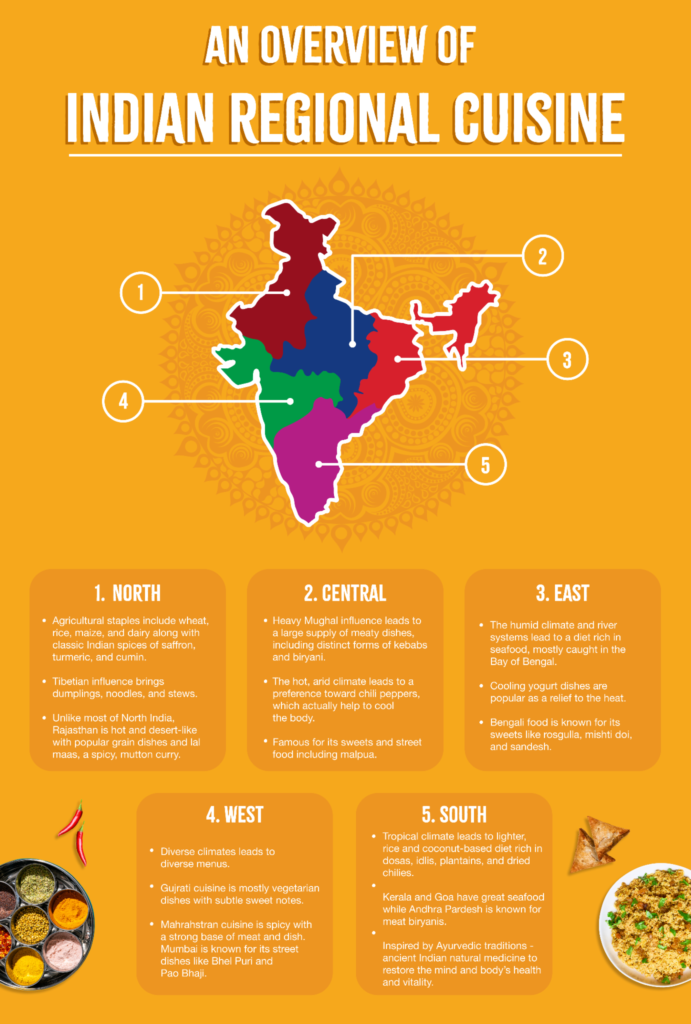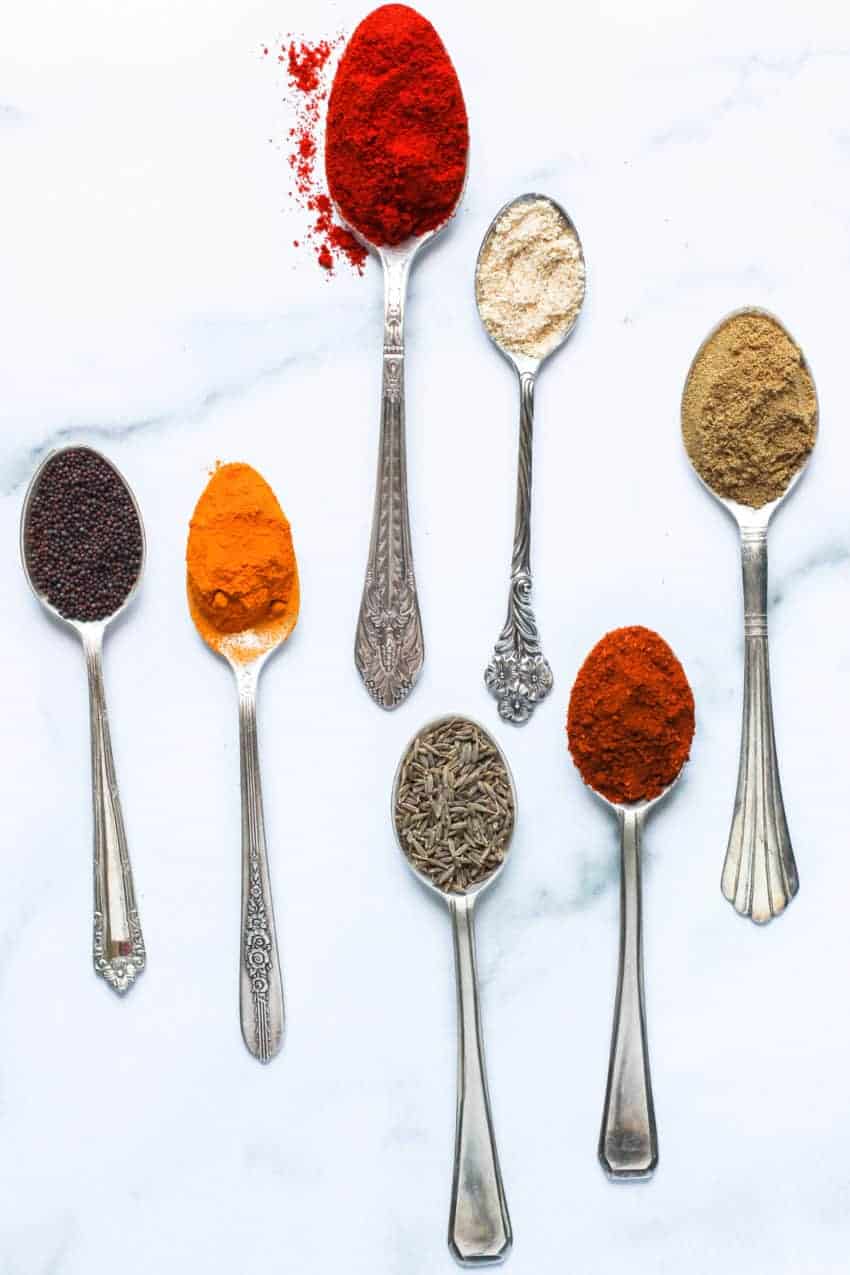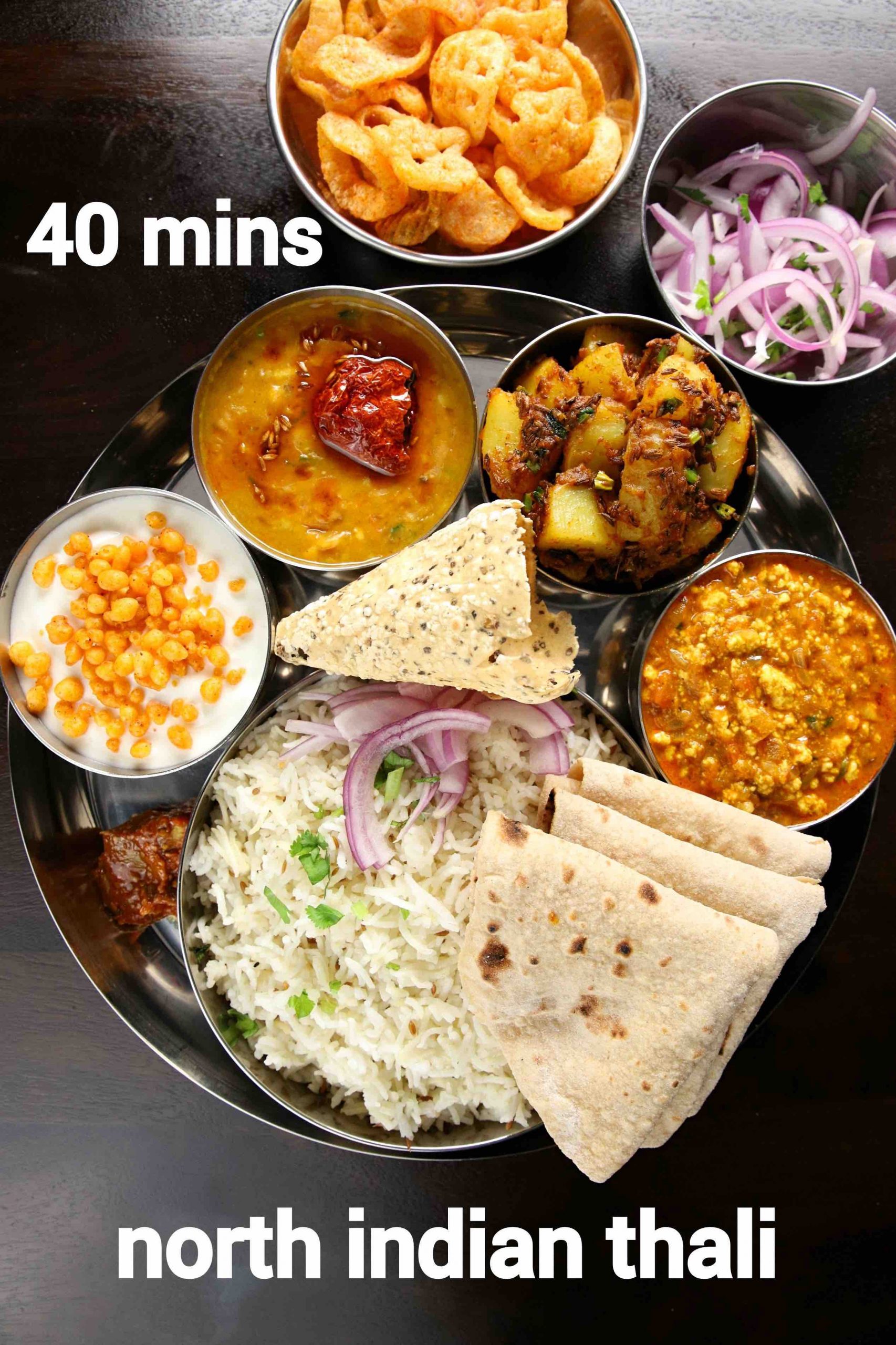15 Incredible Indian Food Dishes That Will Transform Your Taste Buds Forever

Are you ready to embark on a culinary journey through the vibrant and aromatic world of Indian cuisine? From the fiery curries of the north to the coconut-infused delicacies of the south, Indian food offers an extraordinary tapestry of flavors that has been captivating American palates at an unprecedented rate. This comprehensive guide will introduce you to the magnificent diversity of Indian cuisine, its powerful health benefits, and the most beloved dishes that are currently taking the USA by storm.
The Rising Popularity of Indian Food in America
Indian cuisine has experienced a remarkable surge in popularity across the United States in recent years. According to food industry reports, Indian menu items and flavor allusions on U.S. menus have risen by 10% in just the past year alone. This growing appetite for Indian flavors can be attributed to several key factors:
-
Flavor Exploration: American diners are increasingly seeking bold, complex flavor profiles that Indian cuisine delivers in abundance.
-
Health-Conscious Choices: With more Americans embracing plant-based and nutritionally balanced diets, Indian food’s vegetarian options and use of beneficial spices align perfectly with modern dietary preferences.
-
Cultural Fusion: Innovative chefs are successfully blending traditional Indian flavors with American favorites, creating exciting new dishes that serve as approachable entry points into the cuisine.
-
Growing Indian Community: The increasing number of Indian expatriates opening authentic restaurants across the country has elevated the quality and accessibility of genuine Indian dishes.
As noted by The Curry Restaurant, “In today’s interconnected world, American diners are increasingly eager to try foods from different cultures. Indian restaurants are meeting this demand by blending traditional Indian cooking with local preferences.” The Curry Restaurant
Regional Varieties: The Four Culinary Zones of India

To truly appreciate Indian cuisine, one must understand its regional diversity. India’s vast landscape, varied climate, and rich cultural history have led to the development of distinct culinary traditions across different regions:
Northern Indian Cuisine
Northern Indian food is what most Americans typically associate with “Indian restaurant food.” This cuisine features:
- Climate Influence: The temperate climate and fertile Indo-Gangetic Plain support wheat cultivation, making bread a staple.
- Key Ingredients: Dairy products like paneer (Indian cheese), ghee (clarified butter), and yogurt feature prominently.
- Signature Dishes: Tandoori Chicken, Butter Chicken, Naan bread, and rich, creamy curries.
- Cooking Methods: Use of clay tandoor ovens for breads and meats is characteristic of this region.
Southern Indian Cuisine
Southern Indian food offers lighter, tangier flavors that are less familiar to many Americans but equally delicious:
- Climate Influence: The tropical coastal environment leads to rice-based dishes with coconut, tamarind, and seafood.
- Key Ingredients: Rice, lentils, coconut, curry leaves, and dried red chilies.
- Signature Dishes: Dosa (rice and lentil crepes), Idli (steamed rice cakes), Sambar (tangy lentil stew), and seafood curries.
- Cooking Methods: Steaming, fermenting, and tempering with mustard seeds and curry leaves.
Western Indian Cuisine
This region offers a fascinating mix of vegetarian traditions and coastal influences:
- Notable Features: High percentage of vegetarian cuisine, especially in Gujarat, alongside seafood specialties in coastal areas.
- Key Ingredients: Dried lentils, legumes, barley, and millet-based breads.
- Signature Dishes: Pav Bhaji (spiced vegetable stew with soft bread rolls), Vada Pav (potato fritter sandwich), and Gujarati thali.
- Cultural Influences: Portuguese influences in Goa have led to vindaloo and other distinctive dishes.
Eastern Indian Cuisine
Eastern India is renowned for its sweets and subtle flavors:
- Climate Influence: Humid with extensive river systems, supporting rice cultivation and fresh produce.
- Key Ingredients: Rice, fish, mustard oil, and panch phoron (five-spice blend).
- Signature Dishes: Machher Jhol (fish curry), Rasgulla (cheese dumplings in syrup), and Mishti Doi (sweet yogurt).
- Cooking Style: Emphasis on steaming and slow cooking with subtle spicing.
15 Must-Try Indian Dishes

1. Butter Chicken (Murgh Makhani)
This iconic dish originated in 1950s Delhi and features tender tandoor-cooked chicken in a rich, buttery tomato sauce. It’s creamy, slightly sweet, and perfect for those new to Indian cuisine. The velvety sauce combines tomatoes, butter, cream, and a delicate blend of spices that’s simultaneously indulgent and balanced.
2. Tandoori Chicken
A classic dish where chicken is marinated in yogurt and spices, then cooked in a clay tandoor oven. The result is smoky, tender meat with a distinctive reddish hue from Kashmiri chili powder. This dish demonstrates how Indian cuisine expertly balances spices for depth rather than just heat.
3. Chicken Tikka Masala
Though technically developed in Britain, this dish has become an ambassador for Indian flavors worldwide. Featuring grilled chicken chunks in a creamy tomato sauce, it offers a milder entry point into Indian curries. Some food historians believe it evolved from butter chicken as chefs adapted to Western palates.
4. Biryani
This aromatic rice dish features layers of basmati rice and marinated meat or vegetables cooked together with saffron and spices. Regional variations abound, from Hyderabadi to Lucknowi styles, each with its distinct preparation methods. Biryani exemplifies how Indian cuisine transforms simple ingredients into complex, fragrant masterpieces.
5. Dosa
A South Indian specialty, dosa is a crispy, fermented crepe made from rice and black lentil batter. Traditionally served with coconut chutney and sambar, dosas can be stuffed with spiced potatoes (masala dosa) or other fillings. The fermentation process gives dosas their characteristic tangy flavor and nutritional benefits.
6. Saag Paneer
This North Indian vegetarian dish combines creamy spinach (saag) with cubes of paneer cheese. The earthy, mildly spiced spinach puree provides a perfect contrast to the firm, mild cheese. The dish represents how Indian cuisine skillfully incorporates dairy proteins into vegetarian cooking.
7. Chana Masala
A beloved vegetarian dish featuring chickpeas simmered in a tangy, spiced tomato sauce. Popular across India but especially in the North, this protein-rich dish showcases how Indian cooking extracts maximum flavor from humble ingredients through careful spicing.
8. Samosas
These triangular pastries filled with spiced potatoes, peas, and sometimes meat are a perfect snack or appetizer. Crispy on the outside and savory inside, they’re often served with mint chutney or tamarind sauce. Samosas demonstrate the influence of Middle Eastern cuisine on Indian food traditions.
9. Dal Makhani
A rich lentil dish from Punjab, slow-cooked with kidney beans, butter, and cream. The depth of flavor achieved from simple ingredients makes this dish a testament to Indian cooking techniques. The slow cooking process allows the lentils to break down partially while maintaining some texture.
10. Vindaloo
Originally from Goa and influenced by Portuguese colonization, this fiery curry traditionally features pork marinated in vinegar and garlic. The complex blend of spices creates a hot, tangy profile that’s gained a devoted following among spice enthusiasts in America.
11. Rogan Josh
This aromatic lamb curry from Kashmir features tender meat in a sauce rich with Kashmiri chilies, yogurt, and aromatic spices. The dish’s name roughly translates to “red passion,” referring to both its color and the intensity of its flavors.
12. Aloo Gobi
A comforting dry curry of potatoes (aloo) and cauliflower (gobi) with turmeric and cumin. This everyday dish showcases how Indian home cooking transforms simple vegetables into satisfying meals through thoughtful spicing.
13. Malai Kofta
Vegetarian “meatballs” made from paneer and potatoes, served in a rich, creamy sauce. This North Indian dish often appears at celebrations and demonstrates how vegetarian cuisine can be luxurious and festive.
14. Gulab Jamun
These sweet, syrup-soaked milk solids are India’s beloved dessert, commonly served warm at celebrations. The soft, spongy texture soaks up the cardamom-scented sugar syrup, creating an indulgent treat that perfectly concludes an Indian meal.
15. Masala Chai
More than just a beverage, this spiced tea represents Indian hospitality and the art of spice blending. Black tea is simmered with milk, sugar, and warming spices like cardamom, cinnamon, and ginger, creating a comforting drink enjoyed throughout the day.
Health Benefits of Indian Cuisine

Indian food isn’t just delicious—it’s also packed with health benefits thanks to its strategic use of spices, herbs, and cooking techniques:
Anti-inflammatory Powerhouses
Many Indian spices, particularly turmeric (containing curcumin), have potent anti-inflammatory properties that may help reduce chronic inflammation in the body. Studies have shown that regular consumption of these spices may contribute to lower rates of inflammatory conditions.
Digestive Support
Spices like ginger, cumin, and fennel have been used in Ayurvedic medicine for centuries to aid digestion. Many Indian meals conclude with fennel seeds (saunf) specifically to promote healthy digestion and prevent bloating.
Heart Health Benefits
The abundance of plant-based options, legumes, and beneficial spices in Indian cuisine supports cardiovascular health. As noted by Parikh Health, “Some Indian dishes, such as those made with lentils and vegetables, are low in saturated fat and high in fiber, which can help promote heart health.” Parikh Health
Immune System Support
The antimicrobial and antiviral properties of spices like black pepper, cardamom, and cloves may help boost immunity and fight infections. This traditional knowledge is increasingly supported by modern scientific research.
Blood Sugar Regulation
Many Indian dishes incorporate bitter melon, fenugreek, and cinnamon, which have been shown to help regulate blood glucose levels. Additionally, the complex carbohydrates from legumes and whole grains provide steady energy without dramatic blood sugar spikes.
Essential Indian Spices and Their Uses
The magic of Indian cuisine lies in its masterful use of spices. Here are some fundamental spices worth knowing:
Turmeric (Haldi)
This bright yellow spice gives many Indian dishes their characteristic golden color and contains curcumin, a compound with powerful anti-inflammatory properties. It’s used in almost every curry and has a slightly bitter, earthy flavor.
Cumin (Jeera)
Earthy and warm, cumin seeds are often the first spice added to hot oil when starting a dish. Whether used whole or ground, cumin adds nutty depth to countless recipes and aids digestion.
Cardamom (Elaichi)
Available as green or black pods, cardamom offers an intense, aromatic sweetness. Green cardamom flavors desserts and masala chai, while the smokier black variety is used in savory dishes like biryani.
Coriander (Dhaniya)
The seeds of the cilantro plant have a citrusy, slightly sweet profile that balances hotter spices. Ground coriander forms the backbone of many curry powders and spice blends.
Garam Masala
This finishing spice blend typically includes cardamom, cinnamon, cloves, cumin, coriander, and black pepper. Added near the end of cooking, it provides aromatic warmth and complexity to dishes.
Kashmiri Red Chili
Valued more for its vibrant color than heat, this chili powder gives dishes like butter chicken their characteristic orange-red hue without overwhelming spiciness.
How to Enjoy Indian Food in America

Finding Authentic Restaurants
Look beyond the standard butter chicken and seek restaurants specializing in regional cuisines. Ask for recommendations from Indian friends or check online reviews mentioning authenticity or specific regional styles.
Understanding Menu Terminology
- Masala: A blend of spices or a dish with sauce
- Tandoori: Cooked in a clay oven
- Tikka: Marinated and grilled pieces
- Dal: Lentil dish
- Paneer: Indian cottage cheese
- Thali: A complete meal with multiple small dishes
Smart Ordering for Beginners
If you’re new to Indian food, consider starting with:
- Butter chicken or chicken tikka masala (mild)
- Dal makhani (creamy black lentils)
- Naan bread
- Vegetable biryani (spiced rice)
- Raita (cooling yogurt condiment)
Hosting an Indian Dinner Party
Create a balanced menu with:
- 1-2 protein dishes (chicken, lamb, fish, or paneer)
- 1-2 vegetable dishes
- A lentil dish (dal)
- Rice or bread (naan, roti)
- Accompaniments (chutney, raita, pickles)
- A simple dessert like gulab jamun or kulfi (Indian ice cream)
Frequently Asked Questions About Indian Food
Is all Indian food spicy?
No, Indian cuisine offers a wide spectrum of flavors beyond just heat. While some dishes are certainly spicy, many others focus on aromatic, savory, tangy, or sweet profiles. Dishes like butter chicken, malai kofta, and many dals are mild and creamy rather than hot.
What are good Indian dishes for vegetarians?
Indian cuisine offers perhaps the world’s richest tradition of vegetarian cooking. Try dishes like saag paneer (spinach with cheese), chana masala (chickpea curry), dal makhani (black lentils), aloo gobi (potato and cauliflower), or vegetable biryani (spiced rice).
How can I reduce the heat in Indian dishes when cooking at home?
Reduce or omit chili powder and use Kashmiri chili powder for color without intense heat. Add more dairy elements like cream, yogurt, or coconut milk to mellow the spice. Serve cooling accompaniments like raita (yogurt with cucumber) alongside spicier dishes.
What’s the difference between butter chicken and tikka masala?
While similar, butter chicken (murgh makhani) originated in Delhi, India, and typically has a smoother, more buttery sauce. Chicken tikka masala was likely created in the UK and often features a slightly tangier tomato-based sauce with more pronounced spices.
Are Indian breads always made with wheat?
No, while popular breads like naan and roti are wheat-based, South Indian cuisines offer many gluten-free alternatives made from rice and lentil flours, such as dosa, idli, and uttapam.
How has Indian food been adapted for American palates?
Many Indian restaurants in America offer dishes with milder spicing, more protein, and less oil than would be traditional in India. Fusion creations like tikka masala burritos or curry pizza represent creative adaptations that introduce Indian flavors in familiar formats.
Bringing Indian Cooking Into Your Home
Essential Pantry Staples
Start your Indian cooking journey with these basics:
- Basmati rice
- Basic spices: turmeric, cumin, coriander, garam masala
- Ghee (clarified butter)
- Canned tomatoes
- Dried lentils
- Coconut milk
Beginner-Friendly Indian Recipes
Try these approachable dishes as you explore Indian home cooking:
- Simple dal (yellow lentils with cumin and turmeric)
- Aloo gobi (potato and cauliflower curry)
- Chana masala (chickpea curry)
- Cucumber raita (yogurt sauce)
Cooking Equipment Worth Having
While not essential, these tools enhance your Indian cooking experience:
- Heavy-bottomed pot for curries
- Spice grinder for fresh spice blends
- Pressure cooker or Instant Pot for quick dal and rice
- Masala dabba (spice box) for organizing commonly used spices
Conclusion
Indian cuisine’s rising popularity in the United States reflects Americans’ growing culinary curiosity and appreciation for bold, complex flavors and health-conscious options. By exploring the regional diversity, essential spices, and signature dishes of this ancient culinary tradition, you can embark on a remarkable gastronomic adventure that satisfies both the palate and nutritional needs.
Whether you’re dining out at an authentic Indian restaurant, creating a homemade curry, or enjoying modern fusion interpretations, Indian food offers a world of flavors waiting to be discovered. Let the aromatic spices, diverse cooking techniques, and regional specialties of India transform your culinary experience and expand your appreciation of one of the world’s greatest food cultures.
Have you tried any of these Indian dishes? What’s your favorite Indian restaurant in your area? Share your experiences in the comments below!


